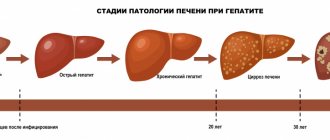Diabetic retinopathy, or pathological changes in the retina in diabetes mellitus, is one of the many complications of this chronic systemic endocrine disorder. And just like other complications of diabetes, retinopathy of this type is very dangerous in prognostic terms, difficult to therapeutically control and correct, and most importantly, does not forgive self-neglect.
As a rule, the development of retinal (retinal) pathology in diabetes begins with angiopathy - a specific vascular lesion, which consists of a gradual degeneration of the tissues of the vascular walls against the background of a general metabolic imbalance. Compaction and dilation of blood vessels, narrowing of their lumens, abnormally high permeability of the walls, loss of elasticity and throughput - all these phenomena together lead to ischemia, that is, to a deficiency of blood supply to those tissues that this vascular system must nourish. In some cases, at later stages, neovascularization begins in tissues - the process of formation of new vascular networks, which is a reactive attempt by the body to some extent compensate for the lack of nutrients and oxygen supplied by the blood. However, instead of compensation, such neoplasms, as a rule, only aggravate the clinical picture.
In general, diabetic retinopathy is one of the leading causes of blindness that develops during working and productive age. Compared to healthy samples, people with diabetes are up to 25 times more likely to go blind. According to statistical data, the probability of developing retinopathy in type I diabetes mellitus with a 10-year duration is 50%, and by 20 years the course reaches 85%, and almost two-thirds of retinopathy in this case is already represented by the most severe, proliferative stage. In type II diabetes, retinopathy most often manifests itself as damage to the macular, - central, - area of the retina, which is most sensitive to light and responsible for transmitting a clear visual signal through the optic nerve head to the brain.
At the stage of proliferation and recurrent hemorrhages (hemorrhages), the risk of complete loss of visual function over the next five years reaches 50%, and intensive complex treatment is necessary to reduce this risk to the lowest possible level.
Symptoms of diabetic retinopathy
An experienced endocrinologist will definitely prescribe regular examinations with an ophthalmologist for any patient with diabetes. The fact is that initial changes in the retina may not be subjectively felt. It will be more difficult to control and correct the situation in later stages, when the tendency to intraocular hemorrhages increases and, as a result, various distortions in the visual fields appear: spots, a foggy veil, floating scotomas (local blind spots), difficulties in focusing visual attention on located close objects (text, small parts, sewing, etc.). Problems of this kind tend to disappear spontaneously at first, without any treatment, and return again after a while.
How the disease develops
Diabetes is accompanied by changes in the structure of the endothelium (inner lining) of the blood vessels that supply the retina, as well as metabolic disorders. The permeability of the retinal vessels is impaired, because of this various undesirable substances begin to penetrate into the retina, while the supply of oxygen to the eye tissues deteriorates. Against the background of the changes occurring, the formation of microaneurysms, the growth of pathological vessels, and pinpoint hemorrhages are noted. Gradually, the described disorders progress, leading to severe visual impairment and blindness.
Classification
According to the clinical picture, diabetic retinopathy is divided into three main forms: background nonproliferative, preproliferative and proliferative. As can be seen from the terms, the distinguishing criterion in this classification is proliferation (“growth”). In this case, we mean the tendency to form and branch a network of new blood vessels (this phenomenon is more accurately called neovascularization), which is observed in the later stages of retinopathy, when the own vessels are no longer able to provide blood supply to the retina.
In addition, diabetic maculopathy, or diabetic macular edema (predominantly affecting the central photosensitive macular zone of the retina) is considered as a relatively independent form.
Background (non-proliferative) retinopathy is the initial stage of diabetic retinopathy. Subjectively, it may not be felt, visual functions are not significantly affected, or the symptoms are “flickering” (impairments appear and then disappear again for a while). Clinically it is characterized mainly by angiopathic (vascular) focal changes: the formation of lipid plaques, thickening of the basement membrane, increased permeability of the walls. Microaneurysms (protrusions) and microhemorrhages are possible - minor hemorrhages and bruises under the vessels.
Preproliferative retinopathy is a natural development of the initial phase. At the second stage, retinal ischemia acquires a distinct character, multiple pathological foci are formed, hemorrhages become more frequent and intensified, the structure and appearance of the veins change.
Finally, proliferative retinopathy is characterized by active neovascularization, proliferation of fibrous tissue, gross organic changes in the tissue of the vascular walls and functional degradation of blood vessels; hemorrhages become massive and reach the level of general hemophthalmos (intraocular hemorrhage). The ingrowth of newly formed vessels leads to various kinds of mechanical anomalies - traction (stretching), compression, compression, etc., which can lead to catastrophic consequences for the eye: for example, the diagnosis of “tractional retinal detachment” literally means forceful separation of the retina by ingrown into the vitreous and mechanically stressed ties.
Diabetic macular edema , i.e. edema of the central zone of the retina (macula, macula) is divided according to the degree of prevalence into focal (local) and diffuse, covering the entire area of the macula. It can lead to loss of central vision, since the photosensitive macula, or macula, is responsible for this visual field, which is the sharpest and clearest. Swelling develops as a result of abundant effusion from blood vessels, liquid and solid exudative foci are formed.
Causes and risk factors of diabetic retinopathy
Since diabetic retinopathy belongs to the group of secondary diseases caused by a more general systemic (in this case, endocrine) pathology, the etiopathogenetic mechanisms and dynamics of retinal damage are closely dependent on the duration and nature of the course of diabetes mellitus. The development of retinopathy in diabetes is based on changes in the structure and composition of the vascular walls, which results in a gradually increasing deficiency of vasculature (blood supply) of the retina. Thus, all factors that in one way or another influence the condition of the retinal vessels in diabetes have pathogenetic significance in the clinic of diabetic retinopathy. The main such factors include:
- blood glucose concentration;
- prevailing blood pressure values;
- the presence of nephropathy (renal pathology);
- the presence and severity of lipid metabolism disorders.
Symptoms and signs of retinopathy
In the early stages of diabetic retinopathy, subjective discomfort may either not be felt at all or be periodic. The first signs include a foggy veil before the eyes, floating spots, areas of invisibility in the field of view (scotomas), primary difficulties when reading or working with small objects. However, more often the tendency to organic damage to the retina in diabetes is diagnosed by an ophthalmologist during a routine or preventive (in the direction of an endocrinologist) examination or during a targeted examination of the structures of the fundus.
Diagnostics
Methods for diagnosing diabetic retinopathy are not particularly specific and include standard ophthalmological examination procedures:
- analysis of complaints and anamnestic information;
- accurate measurement of visual acuity (visometry);
- biomicroscopic examination of the anterior segment of the eye;
- biomicroscopic examination of the retina using aspherical lenses;
- direct and reverse ophthalmoscopy;
- stereoscopic photography;
- fluorescein angiography of the retina (one of the types of contrast radiography);
- ultrasound examination of the eye;
- optical coherence tomography;
- duplex scanning of blood vessels.
Typically, the examination is comprehensive and includes several diagnostic methods. The objectives of such an examination are to assess the general condition of the multilayered retinal tissue and the circulatory system that feeds it, early detection of areas of ischemia (insufficient blood supply) and incipient neovascularization, identification of microhemorrhages, areas of swelling, mechanical ruptures, etc. It is also important to evaluate the effectiveness of preventive measures and the general dynamics of the retina during treatment.
Retinopathy in diabetes mellitus: diagnosis
It is worth noting that with this disease, the patient must visit an ophthalmologist every six months in order to detect complications in time and begin their treatment. To confirm retinopathy, you need to undergo several procedures:
- perimetry, which evaluates visual fields;
- electrophysiological study to determine the viability of nerve cells of the inner membrane and optic nerve;
- tonometry - a procedure for measuring intraocular pressure, which can increase already at the stage of preproliferative retinopathy;
- ophthalmoscopy - examination of the fundus of the eye, which displays all pathological changes, new vessels, exudates and microhemorrhages are visible.
Ultrasound, OCT, diaphanoscopy and other diagnostic methods may be prescribed. This depends on the degree of the disease and the presence of concomitant pathologies. For diabetes mellitus, the main therapeutic treatment is carried out by an endocrinologist.
Treatment of diabetic retinopathy
In addition to the treatment of the underlying disease (which is the key direction in the treatment of any secondary pathology), diabetic retinopathy, especially in the middle and late stages, requires special ophthalmological care, including ophthalmic surgery. Thus, compensation of diabetic symptoms itself, control of blood pressure and the maximum possible normalization of fat metabolism are necessary, but not sufficient measures to preserve the retina in diabetes.
In the special ophthalmological treatment of diabetic retinopathy, three main directions can be traced: conservative treatment, ophthalmic surgery and excimer laser therapy. In this regard, it should be noted that laser therapy has developed rapidly in recent decades, proving to be so effective and safe that today it is rightfully considered a separate therapeutic strategy, intermediate between surgical and conservative methodologies.
Drug treatment (drugs)
Conservative therapy for diabetic retinopathy, in turn, can be classified according to the areas of influence. Thus, to reduce overload on the walls of blood vessels, drugs are prescribed that normalize the rheological parameters of the blood (density, viscosity): aspirin and various compounds of acetylsalicylic acid; ticlopidine (targets the characteristics of blood plasma, reduces the content of fibrinogen protein, which is involved in thrombus formation); sulodexide (also prevents the formation of blood clots, has an angioprotective effect, stimulating the regeneration of vascular wall tissue). Angiotensin-converting enzyme (ACE) inhibitors, in particular lisinopril, are a powerful means of controlling and normalizing blood pressure, which significantly slows the rate of progression of retinopathy and is therefore prescribed even in the absence of clinical arterial hypertension. Medicinal stimulants of microcirculation, for example, calcium dobesilate, relieve blood vessels and help normalize their functional state.
In some cases, parabulbar (percutaneous in the area of the lower eyelid, to a depth of about 10 mm) injections of drugs with trophic action are prescribed, i.e. stimulants for supplying and nourishing the retina.
Intravitreal (directly into the vitreous) injections of steroid hormones, for example, triamcinolone, as well as drugs that block the proliferation of blood vessels (Lucentis, Avastin and others) may also be indicated.
In addition, antioxidants, which are also prescribed in combination with other medications, have a preventive retino- and angioprotective effect. In general, the combination of drugs is selected individually and determined by the specific clinical situation.
Laser treatment (retinal coagulation)
Laser coagulation is currently one of the most effective methods for preventing retinal detachment, including diabetic retinopathy. Exposure to a powerful and narrowly targeted light flux allows you to eliminate the neovascular vascular network, stimulate your own blood circulation, thereby reducing the severity and mitigating the consequences of local ischemia.
Depending on the planned target navigation of the laser beam, there are three main coagulation techniques: panretinal (pulsed laser “injections” with a diameter of 100-400 microns and a number of up to 2000 or more are made over the entire area of the retina), focal (directed at a clearly localized focus) and “ lattice”, applied in the form of individual dots.
Ophthalmic surgery for diabetic retinopathy usually involves vitrectomy, i.e. complete or partial removal of the vitreous body, and is a necessary measure in cases where the process of pathological tissue degeneration has gone too far, other methods are ineffective and retinal detachment can only be prevented by surgery.
Types of diabetic neuropathy
There are four main types of diabetic neuropathy. Most develop gradually, so this complication may not be noticed until serious problems arise.
Peripheral polyneuropathy
Peripheral neuropathy is the most common form of diabetic neuropathy. First, problems with sensitivity develop in the legs, then signs of neuropathy may appear in the arms. Symptoms of peripheral neuropathy are often worse at night and may include:
- Numbness or decreased ability to feel pain or changes in temperature.
- Tingling or burning sensation.
- Sharp pain or cramps.
- Increased sensitivity to touch - for some people, even the weight of a sheet can be excruciating.
- Muscle weakness.
- Loss of reflexes, especially in the ankle.
- Loss of balance and coordination.
- Serious foot problems such as ulcers, infections, strains and bone and joint pain.
Autonomic neuropathy
The autonomic nervous system controls the heart, bladder, lungs, stomach, intestines, genitals and eyes. Diabetes can affect the nerves in any of these organs, which can cause:
- Problems with urination - urinary retention or incontinence due to damage to the autonomic innervation of the bladder.
- Constipation or uncontrolled bowel movements.
- Slowing of gastric emptying (gastroparesis), leading to nausea, vomiting, bloating and loss of appetite.
- Difficulty swallowing
- Impaired potency in men
- Vaginal dryness and other sexual disorders in women
- Increased or decreased sweating
Diabetic amyotrophy
Diabetic amyotrophy affects the large nerves of the limbs, such as the femoral and sciatic nerves. Another name for this condition is proximal neuropathy, which most often develops in older people with type 2 diabetes.
Symptoms usually occur on one side of the body and include:
- Sudden, severe pain in the hip or buttock
- Thigh muscle atrophy
- Difficulty getting up from a sitting position
Mononeuropathy
Mononeuropathy involves damage to a specific nerve. The nerve may be in the face, torso, or leg. Mononeuropathy is also called focal neuropathy. Most often found in older people.
Although mononeuropathy can cause severe pain, it usually does not cause any long-term problems. Symptoms gradually decrease and disappear on their own after a few weeks or months. Signs and symptoms depend on the specific nerve affected and may include:
- Double vision due to damage to the oculomotor nerve
- Facial paralysis with facial asymmetry
- Pain in the lower leg or foot
- Pain in the lower back or pelvis
- Pain in the anterior thigh
- Pain in the chest or stomach
- Weakness in the hand, with damage to the nerves of the brachial plexus.
Complications of diabetic retinopathy
Thus, advanced retinopathy during a long course of diabetes mellitus, regardless of its type, naturally leads to severe organic changes in the tissues of the eye and can result in complete blindness. The most severe complications of diabetic retinopathy that develop in its later stages include:
- traction (mechanical, tear-off) retinal detachment with its breaks;
- persistent increase in intraocular pressure of the glaucomatous type, developing as a result of neovascularization;
- recurrent hemophthalmos (constant extensive hemorrhages into the vitreous substance of the eye).
To summarize, it is necessary to repeat: only timely diagnosis and adequate treatment and preventive measures taken by a highly qualified ophthalmologist can slow down and stop destructive processes in the blood vessels and retinal tissues, thereby ensuring long-term preservation of visual functions at the highest possible level.
In our ophthalmology center, patients have access to high-quality diagnostics and effective treatment from leading Moscow retina specialists. Trust your vision to professionals and preserve it for many years!
Video about panretinal coagulation
The procedure for laser coagulation of the retina is painless, performed on an outpatient basis and does not require hospitalization.
In the case of proliferative retinopathy, intravitreal injections of antiangiogenic drugs (Lucentis, Eylea) and steroid hormones can be used. For severe diabetic retinopathy, vitreoretinal surgery may be used.[6]
If the central part of the retina is damaged and the patient has difficulty reading, we can recommend installing a Shariot macular lens to be able to work at close range without special additional devices (loupes, glasses for the visually impaired).[7]
At home, it is recommended to use products that improve metabolic processes in the retina (in the form of eye drops containing taurine, methylethylpyridinol), as well as physiotherapeutic treatment - infrasonic vacuum ophthalmic massager AMBO-01, created specifically for use in diseases of the retina and optic nerve.[8]
Our ophthalmology center is one of the most experienced and reliable paid clinics for retinal treatment in Moscow. The clinic is equipped with the most modern diagnostic equipment. The qualifications of our specialists and the level of equipment of the clinic allow us to provide treatment in the most complex cases. Hospitalization is not required - all procedures are performed on an outpatient basis.
Lifestyle (recommendations)
Diabetes mellitus significantly affects the quality of life, requiring the patient to take a responsible attitude to medical prescriptions, recommendations and warnings. Quite strict restrictions in diet and lifestyle are inevitable. On the other hand, observing these same restrictions would not hurt many healthy people, since proper nutrition, quitting smoking and alcohol, optimal exercise and rest, self-control and self-diagnosis skills are, in fact, the basis of active longevity. As for the visual system, any modern person constantly faces loads and overloads that are unnatural for it and do not exist in nature. Periodic, at least once a year, preventive visits to an ophthalmologist should become a habit. If there is such a formidable and serious disease as diabetes mellitus, with the accompanying high statistical risk of retinopathy, regular ophthalmological examinations are necessary and mandatory.










